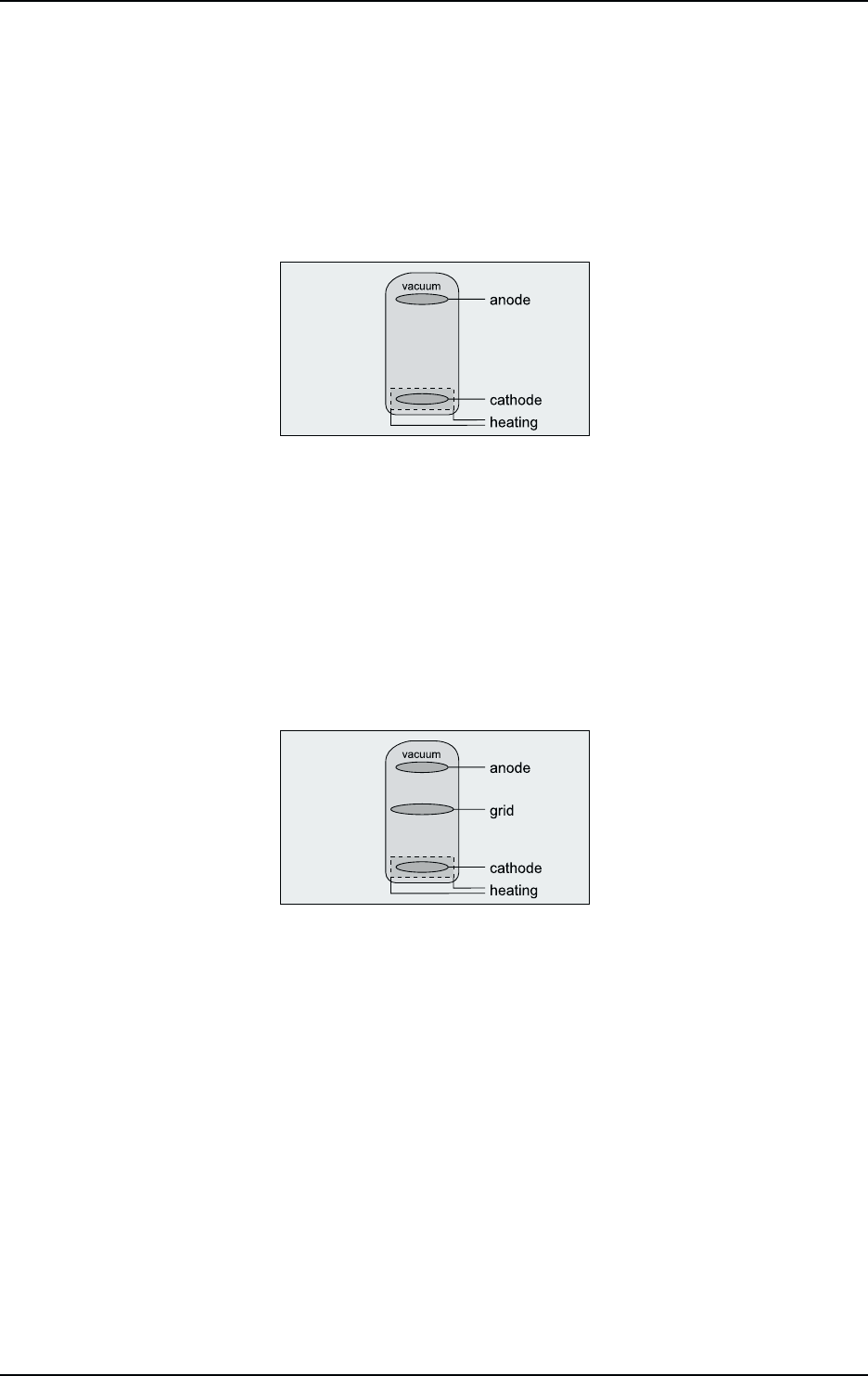
27
TUBE COMPOSER T1952
processing meant the beginning of a new era of recording media that provided plenty of dynamic response and
allowed for loss-free copying of audio signals. As digital media were enhanced, however, many people began
to miss the warmth, power and liveliness they knew from analog recordings. This is why purists still today
consider digital recordings as sterile in sound.
4.4 Design and functional principle of tubes
Tubes can be roughly classified according to the number of electrodes they use. There are tubes with two,
three or five electrodes usually referred to as diodes, triodes or pentodes.
Fig. 4.4: Diode
The diode contains two electrodes in a vacuum glass bulb that have electrical connection to the outside. The
vacuum allows for a free movement of electrons. When one of the electrodes is heated up (= thus becoming a
cathode), it begins to emit electrons. When a positive dc voltage is applied to the other electrode (= anode), the
negative electrons start to wander from the cathode to the anode. With reverse polarity between cathode and
anode, a current flow is not possible because the unheated anode emits more or less no electrons. This design
was used, for example, as a rectifier in the power supplies of amplifiers. The magnitude and velocity of the flow
of electrons depend on the cathodes temperature, the material it consists of, and the magnitude of the anode
voltage. When the electrons hit the anode they produce heat that is dissipated by using large anode plates.
Fig. 4.5: Triode
The triode has an additional metal grid between anode and cathode. By applying a negative voltage, this grid
can be used to control the internal resistance of the tube, and hence the anode current. When the grid bias
voltage (voltage between cathode and grid) becomes negative, the current flowing to the anode is reduced
because the negatively charged grid repels the arriving electrons. As a consequence, there are less electrons
to reach the anode. When the bias voltage is raised towards zero, the flow of electrons accelerates. When it
finally becomes zero or even positive, the grid current begins to flow which considerably reduces the current
flowing to the anode and can possibly destroy the tube. Triodes are most commonly used in pre-amps, often
in pairs arranged in one tube (twin triode).
4. TECHNICAL BACKGROUND


















